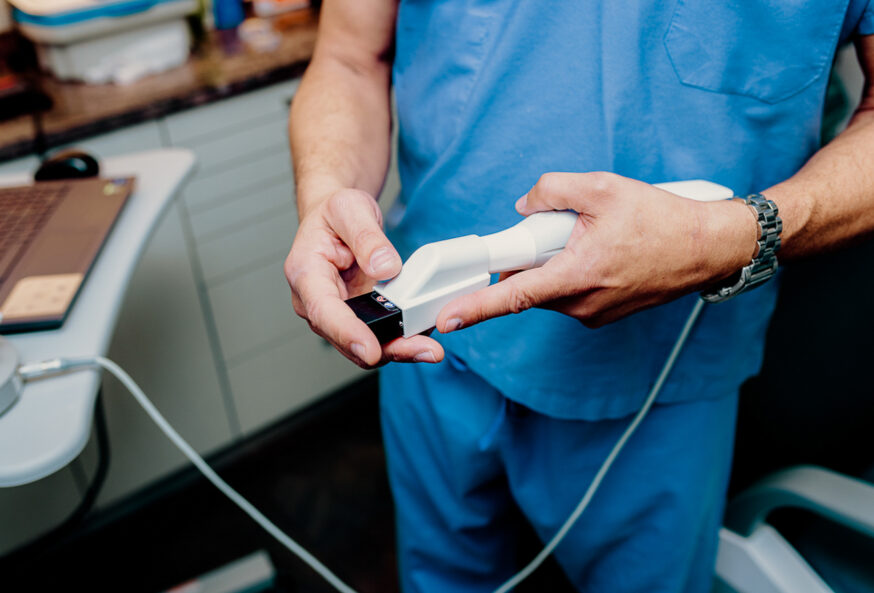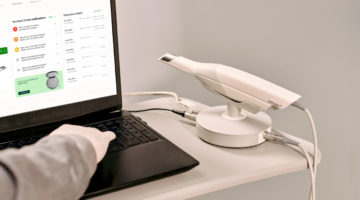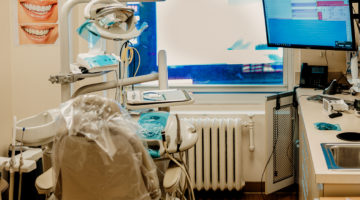A successful dental practice often requires important business decisions, such as being up-to-date with recent technology and being smart about where you spend your money on equipment. It doesn’t matter if you’re upgrading an already established practice or starting a new one; investing in the right dental office equipment is necessary and worthwhile.
From the essentials needed to the latest innovations, every dime spent (correctly) on modern equipment promises invaluable returns in patient care and satisfaction, efficiency, reliability, and, most importantly, the success of your practice. There’s nothing more fulfilling than having a noteworthy return on investment, which is why we have highlighted some important dental equipment you should splurge to grow your practice.
Basic instruments found in the dental operatory
Choosing quality over price when it comes to dental tools and equipment can go a long way toward helping you build an efficient, high-functioning environment for your staff while also aligning your practice’s brand with innovation and organization—ultimately leading to an improved patient experience.
Dental handpieces
The high use of these makes it worth paying more for the dental handpieces that you are most comfortable using. Consider the heft, ergonomics, and performance of the handpiece when weighing options.
Ease of use is imperative but there a more factors that come at a higher cost. Investing in durable, well-designed handpieces enhances patient comfort, workflow, and prolonged lifespan.
Cheek retractors
The “open wide” aid needs to work for both the doctor and the patient. Well-designed retractors prioritize patient comfort by minimizing tissue irritation and pressure. Features like atraumatic edges, comfortable mouthpieces, and adjustable retraction force contribute to a more positive dental experience and potentially reduce patient anxiety. Additionally, some retractors offer built-in tongue guards or saliva evacuation channels, enhancing safety and reducing the risk of accidental injury or contamination.
Curettes
Look to form and function when curating curettes. Opt for curettes made from high-quality stainless steel or other strong materials with comfortable grips and balanced construction.
Certain curettes cater to specific procedures or areas of the mouth. For example, a periodontal curette might have a thinner blade for accessing deep pockets, while a Gracey curette could be designed for specific tooth surfaces. Investing in specialized curettes can enhance efficiency and effectiveness for particular procedures.
Rotary instruments
Rotary instruments are the tip of the spear in dental operatories. As many patients fear these tools, it is best to be as efficient as possible when they are activated. Simply, that means it is imperative to buy the best available to get the task done quickly.
Dental burs
Burs are known for their precision, versatility, and efficiency when performing a wide range of dental procedures, including cavity preparation, crown and bridge work, and root canal treatment.
High-quality dental burs guarantee accurate tooth preparation, reduced chair time, and enhanced patient comfort during procedures. There are also disposable burs, which minimize the risk of cross-contamination and maintain compliance with hygiene standards. This safeguards patient safety and practice reputation.
Dental micromotors
Micromotors are used in dentistry for the treatment of semi-hard dental tissues. They enable dentists to achieve precision, especially when it involves dental procedures while enhancing patient comfort. By paying more for these dental instruments you increase long-term reliability, reducing the need for frequent replacements while ensuring efficiency and profitability on the purchase.
Dental turbines
Most dentists are particular about dental turbines because of their high-speed performance and precision. They offer efficient cutting capabilities and are durable. One important element to consider when purchasing a dental turbine is whether or not they have a light and whether it is an LED or a halogen bulb.
Also, shop around as some brands come with spare rotors in case any repair is necessary as they undergo significant wear due to their high-speed operation.
Surgical and extraction instrument
These are typically tools for dental implants, tooth extractions, oral surgeries, periodontal surgeries, etc.
Dental extraction forceps
While there is such a thing as universal forceps, they are not one-size-fits-all. Make sure you have the right tool for the job.
Firstly, if there are multiple dentists in your practice there can be different preferences between the American Pattern and the English Pattern, ask around internally before purchasing. Then there are different orientations for mandible and maxillary teeth as well as anterior and molar. Know your Cowhorn Pattern from your Bayonet for ideal dentistry.
Surgical handpiece and motor
It makes sense to splurge on a surgical handpiece for so many reasons including precision, durability, and control. One other factor to consider when shopping around is safety. Look for safety features including automatic shut-off mechanisms and burr detection systems.
Dental ronguers
While this can be said of most dental tools, sometimes the impact of a superior ronguer is seen in faster healing times. An elite ronguer can give you incredible control and precision compared to the cheaper versions which minimizes damage to the surrounding tissue.
Common dental practice equipment for which it pays to get the best
Dental chairs
A chair’s design and style will tell patients a lot about your practice. Giving people an ergonomic seat, with comfortable padding and moveable armrests can do a lot of work putting patients at ease, and newer and more modern designs can also convey a cutting-edge aesthetic that will tell patients: this is a cutting-edge practice.
Choosing the right dental chair can also make work easier for dentists, hygienists, and assistants. Modern chairs have programmable positions that allow dentists to make quick adjustments using foot switches and touchpads.
If you think your chairs are on their last legs, patients can probably also tell. And if they’re starting to get worn out or stained, or if they don’t maneuver easily, consider an upgrade.
Dental cabinets
Your operatory cabinetry layout and office design have a big impact on workflow efficiency. You and your dental assistants need to know where all dental instruments are stored and be able to access them quickly. This will ensure seamless dental procedures.
Nobody likes waiting, and patients are quick to notice confusion or disorganization, so give thought to your layout and invest in cabinetry that is durable and long-lasting. When your dental materials and instruments are where you expect and need them to be, patients will similarly pick up on the harmony and cohesion you’ve created. Building this trust with the patient can even produce better care results.
Sterilizers
Don’t skimp on your sterilization equipment. There are many processes that practice employees must follow to ensure patient safety — perhaps none more important than sterilization. The three most common types of sterilizers are autoclaves, dry heat sterilizers, and unsaturated chemical vapor sterilizers.
Because dental offices often don’t have a lot of space for equipment, there are excellent tabletop sterilizers that will help with infection control and don’t take up too much real estate.
Investing in a faster sterilizer can also make your practice run more efficiently — some sterilizers even offer USB and network ports for remote monitoring. When staff have to spend less time at the sterilizer and can spend more time interfacing with patients, everyone wins.
Operatory lights
Every dental office is different, but every office needs quality operatory lights. Whether you’re attaching to the wall, ceiling, cabinet, or delivery system, poor lighting can impact the accuracy and success of diagnosis and treatment. You can focus on a few variables in your operatory lights to make sure you’re getting the most value out of this important expense.
Adjustability is important. It’s a good idea to invest in a light that can be easily adjusted by the dentist or dental assistant while the doctor is working. Make sure that the light you choose works with your delivery system and cabinetry, and that it is compatible with your preferred work methods.
Visibility is the most critical aspect of effective diagnosis and treatment, so know what you need and don’t settle for inadequate lighting.
Intraoral scanner
Stay competitive in today’s rapidly changing market with an intraoral scanner. These devices take three-dimensional scans of a patient’s teeth and gums, creating precise images that allow for greater accuracy when it comes to restorative dental procedures like crowns, bridges, and implants.
And your practice can get an intraoral scanner for free when you partner with Dandy—that’s a lot of pennies.
They provide superior imaging capabilities compared to conventional scanning methods, allowing for faster diagnoses and treatments. By using this new dental technology, clinics can offer a quick, painless, no-gag alternative to dental impressions and other traditional methods.
Finding the best dental practice equipment
Furnishing a top-tier dental office is a major investment, so you should also make sure your new equipment comes with a warranty. And while your options will always vary based on the amount and type of space you have (as well as your budget) making sure your office equipment works together seamlessly will always pay dividends.
From a comfy dental chair to the best handpieces, better equipment helps build an improved patient experience, which can even lead to better treatment results. When your staff is more efficient and more comfortable, your patients will notice, and you and your practice can generate the ultimate goal: more smiles.



